Conflict-Free Diamonds Buying Guide: Are you seeking conflict-free diamonds that match your values? Look no further! We’ll teach you how to buy diamonds responsibly in this detailed guide.
We’ll explore the Kimberley Process Certification Scheme, which ensures humane mining and shipping practices while discussing the importance of choosing a reputable vendor for ethically sourced diamonds.
We’ll even delve into alternative options like recycled and Canadian diamonds.
Join us at BrighterGuide as we uncover the world of conflict-free diamonds and ethical sourcing..
Key Takeaways
- Learn to responsibly purchase conflict-free diamonds by understanding the significance of ethical sourcing and the Kimberley Process Certification Scheme.
- Conflict-free diamonds are those that haven’t funded civil wars or rebel groups, promoting responsible and sustainable mining while considering alternatives like lab-grown and recycled diamonds. Discover a variety of ethical and conflict-free diamonds with James Allen, leading the way in responsible diamond sourcing.
- Choose ethical diamonds to minimize social and environmental impact, support fair mining practices, and consider lab-grown diamonds for a conflict-free, eco-friendly, and design-flexible engagement ring option.
In this post, we’ll explore:
Conflict-Free Diamonds: What Does it Mean
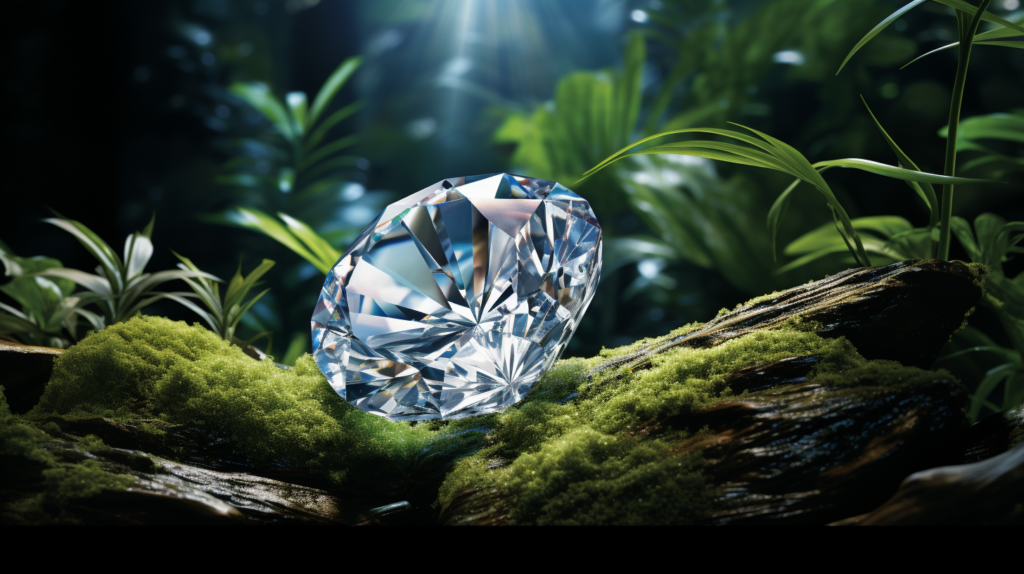
Understanding conflict-free diamonds and ethical sourcing is crucial. Diamonds that haven’t financed civil wars or rebel organizations are conflict-free. The diamond industry has always struggled with blood diamonds or conflict diamonds. These diamonds are linked to human rights violations. environmental damage, and hazardous working conditions.
To learn more about how to celebrate your milestones ethically, check out the guide to diamond anniversary gifts.
To guarantee responsible and sustainable diamond mining and trading. ethical guidelines have been established. Using sophisticated technology, lab-grown diamonds can replace real diamonds. These diamonds have the same physical and chemical attributes as natural diamonds. Without the social and environmental effects of mining.
Explore the differences between lab-grown and natural diamonds in greater detail at lab-grown vs. natural diamonds.
Previously held diamonds can be recycled into the diamond trade. Since they’re not fresh, these diamonds have no environmental effect. Consumers may support ethical sourcing and the diamond industry by buying lab-grown or recycled diamonds.
Where Diamonds Come From
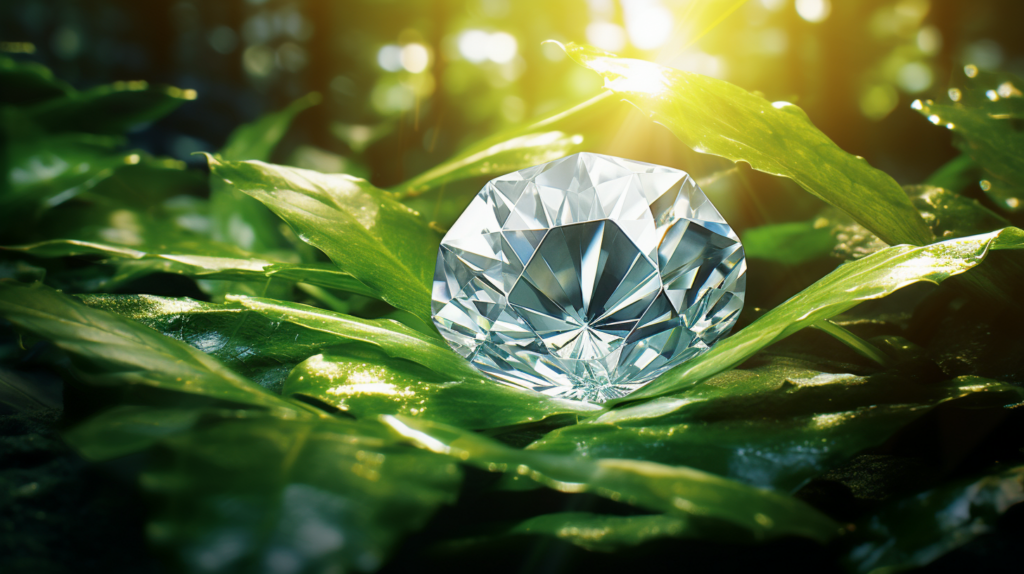
Diamonds’ natural beginnings are crucial to understanding their origins.
Diamonds develop in the Earth’s mantle under high pressure and temperature.
Over millions of years, volcanic eruptions bring these diamonds to the surface. Where they may be extracted and sold.
Diamonds’ rarity and journey from the Earth to our jewelry are better understood when we understand their natural beginnings.
Adding to the understanding of diamonds’ origins, it’s essential to recognize the complexity of the diamond industry. Rough diamonds, mined from deep within the Earth, embark on a journey, often passing through hands in many countries. Notably, African countries are significant producers of these precious stones. However, mining diamonds can lead to environmental degradation and, sometimes, unsafe conditions for workers.
Renowned companies like Blue Nile and Brilliant Earth have set high standards in the professional diamond trade. They commit to ethical engagement rings, ensuring their diamonds come from sources that adhere to strict labor and environmental standards. This commitment helps in preventing unethical practices and supports community development in mining areas.
Loose diamonds, once extracted, are meticulously sorted and crafted into beautiful pieces. The industry has evolved, with a focus on ethical diamond sourcing and responsible sourcing, aiming for an environmental footprint that respects both nature and the communities involved.
Natural Diamond Origins
Diamonds come from throughout the world. Lab-created diamonds use modern technologies in a controlled setting. However, raw diamonds are mined and processed to make polished diamonds used in jewelry.
Canadian diamonds have gained recognition for their ethical sourcing and high environmental standards. They are mined in Canada where strict government requirements ensure responsible mining practices. Choosing diamonds from specific countries of origin allows consumers to support ethical jewelry and contribute to sustainable practices.
Now, let’s delve into the topic of ethical diamonds and conflict-free diamonds.
Ethical Diamonds and Conflict-Free Diamonds
We can promote fair mining and avoid human rights and environmental harm by buying ethical diamonds. Beyond being conflict-free. Ethical diamonds are mined and delivered to minimize social and environmental impact. We should examine the environmental and social impacts of diamond mining while buying.
| Ethical Diamonds | Conflict-Free Diamonds | Diamond Alternatives |
| Mined and shipped in a way that minimizes harm to society and the environment | Do not support rebel groups but may not meet the highest ethical standards | Recycled diamonds have nearly zero environmental and social impact as they are repurposed |
| Ensure fair pay, safe working conditions, and no human rights abuses | Aim to prevent conflict diamonds from entering the global diamond trade | Antique or modern cut diamonds that have been repurposed |
| Support responsible mining practices and ensure ethical sourcing | Certified by the Kimberley Process to verify conflict-free status | Gemstones offer a beautiful and ethical option |
| Can be traced from the mine to the vendor with a unique ID number | Little oversight in the Kimberley Process, making it difficult to track the origin of diamonds | Choose recycled diamonds from reputable vendors for an eco-friendly and ethically sourced choice |
| Provide assurance of their ethical origin | Artisanal mining accounts for approximately 15% of the world’s diamonds | Consider Canadamark diamonds for fully audited ethical mining practices |
Choose vendors who have a zero-tolerance policy for child labor, promote fair trade, and emphasize the well-being of diamond mining communities for ethical diamonds. By supporting ethical diamond mining, we help create a world where diamonds are beautiful and symbolic of change.
The Kimberley Process
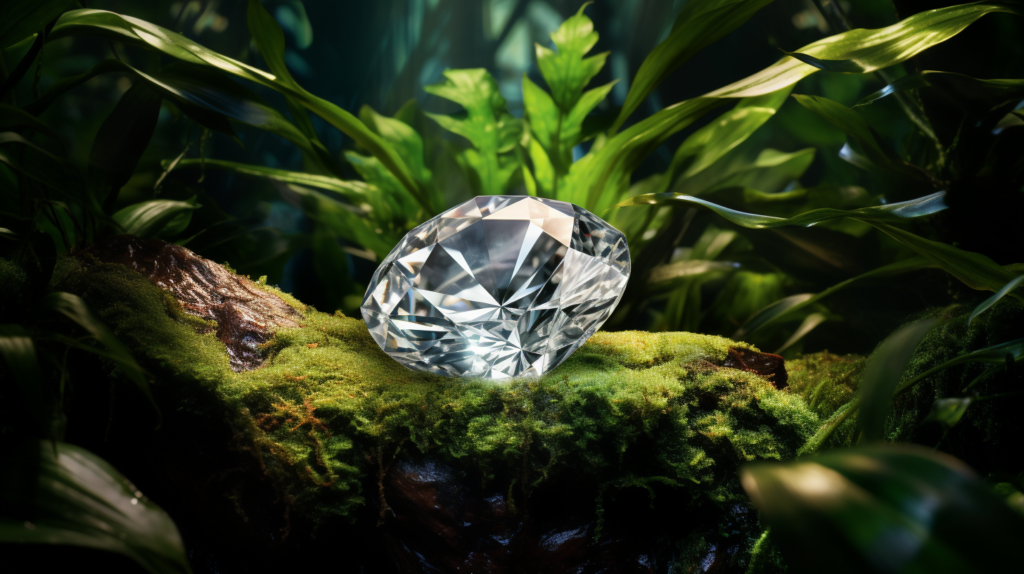
To ensure the ethical sourcing of diamonds, we rely on the Kimberley Process to prevent conflict diamonds from entering the global trade. The Kimberley Process Certification Scheme, implemented after the Sierra Leone war, aims to ensure humane mining and shipping practices for diamonds. Participating countries closely monitor the diamond supply chain. To prevent criminal activity and ensure conflict-free diamonds.
Each diamond has a Kimberley Process certificate proving it is conflict-free. Conflict diamonds have decreased globally since the Kimberley Process was implemented. The Kimberley Process lacks monitoring, making diamond origin tracking impossible. Trader certification is essential by the Kimberley Process. Because diamonds can change hands numerous times before reaching retail.
Conflict diamonds are unlikely to be compliant with the Kimberley Process. It’s crucial to support ethical diamond mining practices and choose reputable vendors that adhere to the Kimberley Process standards. By doing so, we contribute to a more responsible and transparent diamond industry. Free from the taint of blood diamonds.
Recycled and Antique Diamonds
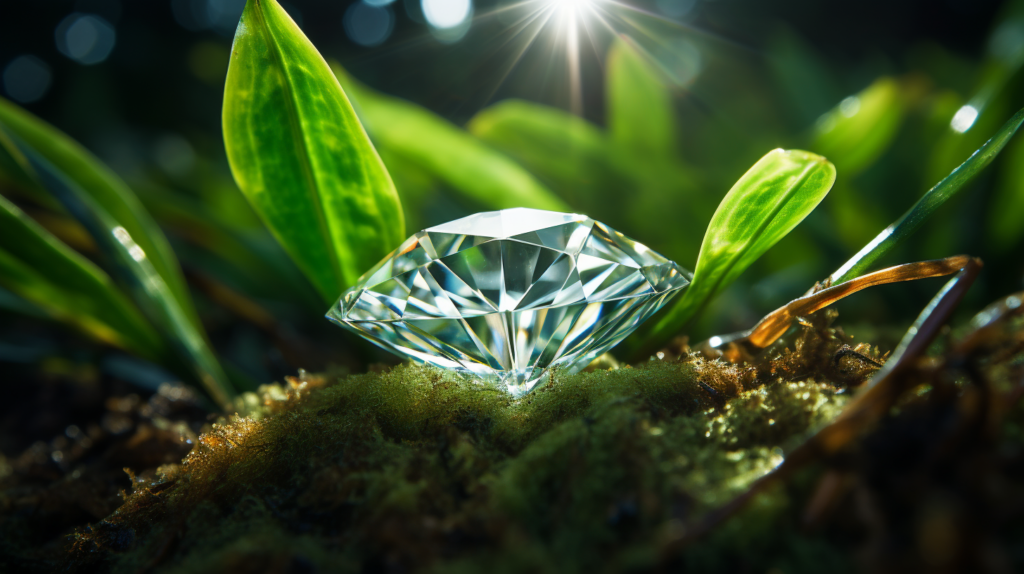
When considering ethical options for diamonds, we can explore the benefits of recycled and antique diamonds. These diamonds offer a sustainable and environmentally friendly choice, especially for those who are conscious of the impact of diamond mining. Recycled diamonds are sourced from previously owned pieces and reintroduced into the supply chain, effectively reducing the demand for newly mined diamonds. They have minimal environmental and social impact, making them an excellent choice for those seeking ethical alternatives.
Visit diamonds value for insights on the value of diamonds and how they’re assessed.
Diamonds can be recycled as ancient or contemporary cuts. When purchasing diamonds, opting for ethical suppliers that source them responsibly is crucial. By buying recycled diamonds, you’re supporting social responsibility and environmental sustainability. With that, you can learn more about diamond clarity and its importance in ethical sourcing.
Besides their environmental benefits, repurposed diamonds possess an antique appeal. The intricate decorations and historical significance of antique diamonds render them timeless. They add elegance and uniqueness to any jewelry piece. For further information, explore the distinct beauty of radiant-cut diamonds in ethical jewelry at radiant cut diamonds.
Lab-Grown Diamonds
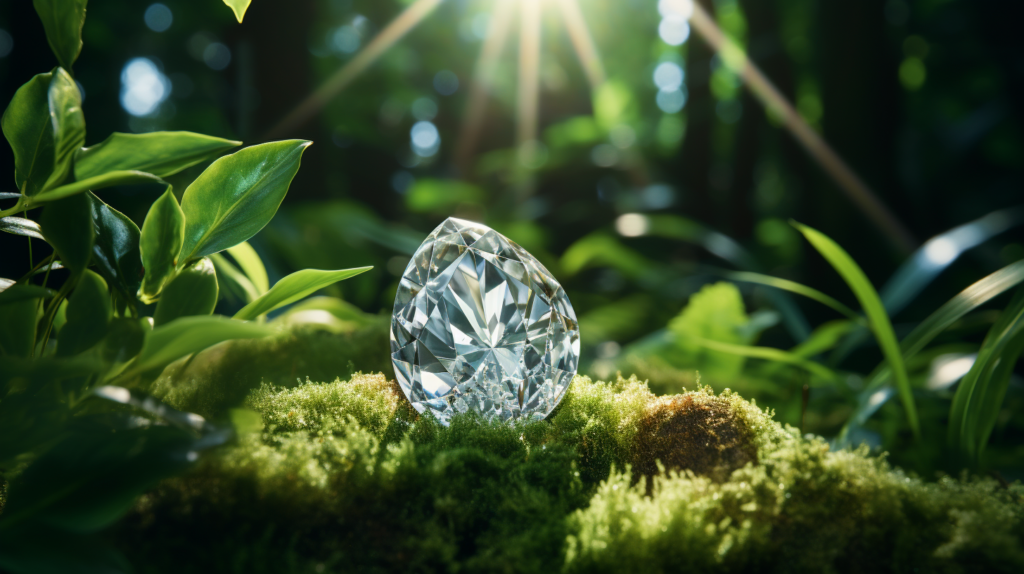
We may examine lab-grown diamonds’ advantages over mined ones. Advanced technology creates lab-grown diamonds that mirror natural diamond creation.
Three reasons to choose lab-grown diamonds:
- Conflict-Free: Lab-grown diamonds are NEVER linked to human rights violations or civil conflicts. Lab-grown diamonds are ethically sourced, giving you peace of mind.
- Eco-Friendly: Lab-grown diamonds are considered greener than mined ones because their production requires less land, water, and energy, making them more sustainable. Lab-grown diamonds make a guilt-free engagement ring for eco-conscious consumers.
- Design Flexibility: Lab-grown diamonds come in many shapes and sizes, allowing for limitless engagement ring designs. Lab-grown diamonds come in several forms, so you may construct the perfect ring for your loved one.
A conflict-free, ethical, and ecologically sustainable diamond ring can be made with lab-grown diamonds, which are popular among ethical and discerning diamond shoppers for their resemblance to mined diamonds in appearance and shine.
Conclusion
In conclusion, buyers should choose conflict-free and ethically sourced diamonds to avoid supporting rebel groups or conflict diamond policies. Beyond being conflict-free, ethical diamonds are mined and delivered to minimize social and environmental impact. This implies fair compensation, safe workplaces, and no human rights violations.
We may also lessen our environmental effects by using recovered diamonds. Reusing these diamonds has no social or environmental consequence. However, Canadian diamonds are obtained using rigorous environmental and fair labor standards. Responsible mining and ethical sourcing are supported by Canadian diamonds. Explore James Allen‘s exquisite collection of Canadian and recycled diamonds, showcasing a commitment to environmental sustainability and ethical practices.
Finally, the adoption of blockchain technology in the diamond industry has potential. To provide complete transparency and traceability. Further enhancing the credibility of conflict-free and ethical diamonds.
Sources
BrighterGuide is dedicated to providing accurate and relevant information as you explore the wonderful world of diamonds and jewelry. To this end, our writers refer to primary information sources in building each article that appears on this website. These include, but are not limited to, published news articles, government portals, research papers, and more.
- Gemological Institute of America. (n.d.). Gemological Institute Of America | All About Gemstones – GIA. https://www.gia.edu/
- Natural Diamond Grading Reports & Services. (n.d.). https://www.gia.edu/gem-lab-service/diamond-grading
- Learn How to Buy a Diamond with the GIA Diamond Buying Guide | 4Cs of Diamond Quality by GIA. (2022, July 22). GIA 4Cs. https://4cs.gia.edu/en-us/diamond-buying-guide/